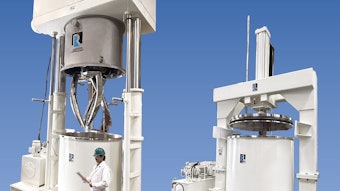Dendrimers are unique macromolecules that were invented in the late 1970s. They are three-dimensional, highly branched, star-like or tree-like polymers. They have three main components: a center core; a dendritic or branched interior; and exterior end groups. The uniqueness of this class of polymers is that they are well defined and are monodisperse, that is, the components of the polymer all have the same molecular weight. Most polymers are polydisperse in that there is a varying mixture of chain lengths in the final polymer.
The monodispersity is achieved by a synthetic method, which involves repetitive step-wise reactions that build up chains from the central core and radiate out in a controlled manner. The reactions are usually standard chemical transformations.
Tomalia produced the first family of dendrimersa in the 1980s. They are based on the addition of methyl acrylate to an ammonia core to make a triester, followed by amidation with ethylenediamine. These steps are repeated until the desired molecular weight is reached.
There has been a great deal of work in the synthesis, characterization and application of these macromolecules. In many ways, working in this class of compounds is the synthetic chemist’s dream project. The reaction chemistry used is only limited by the imagination of the researcher. It is relatively easy to control size, composition and chemical reactivity. The shape of the final molecule can vary, depending on the building blocks used.










